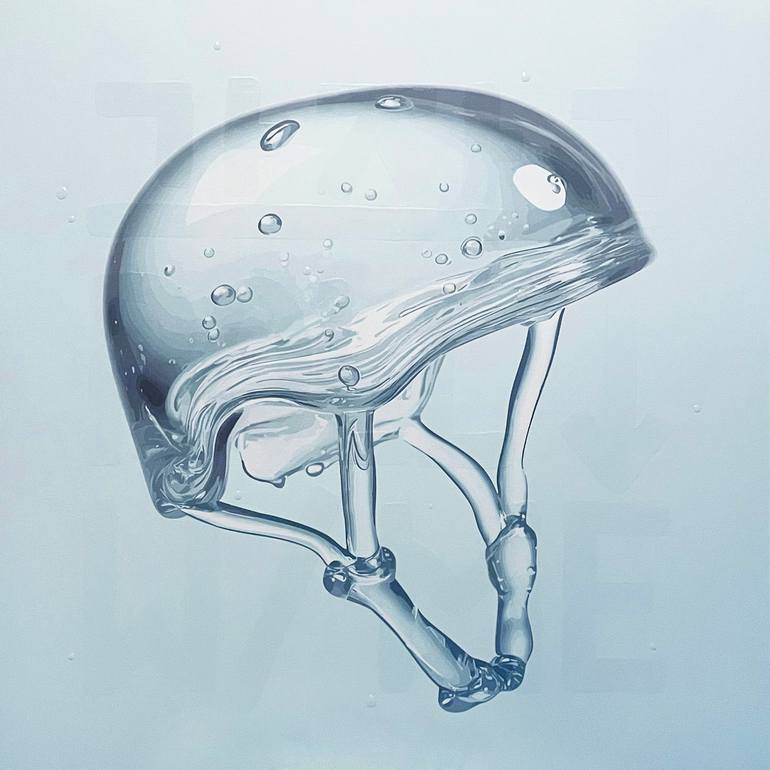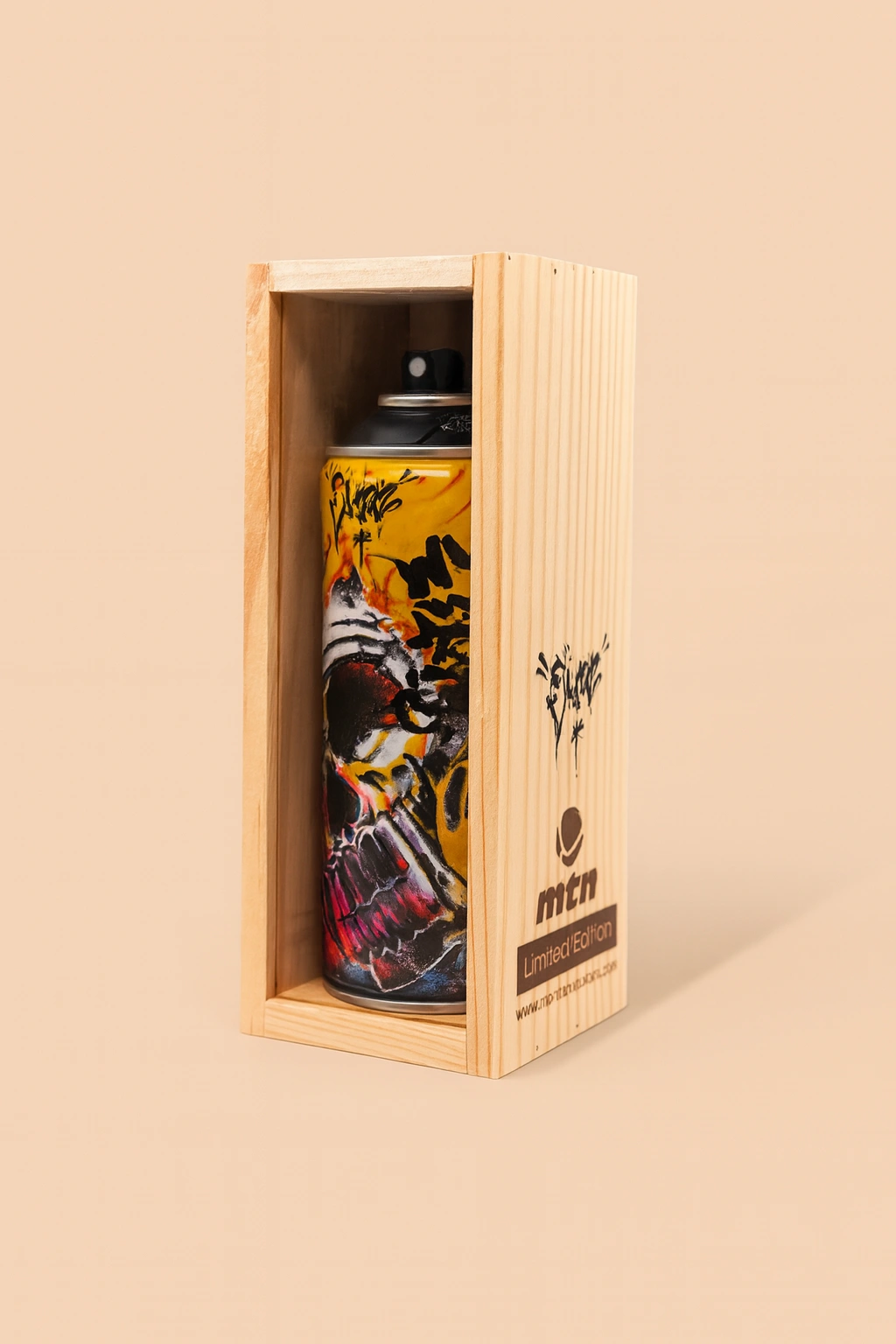In a world constantly humming with notifications, endless scrolling, and digital chatter, certain artworks manage to break through the noise and connect directly to our emotional core. One such work is “가자구 ROLL W/ ME” by South Korean artist Mee Ha. A daring union of mixed media and digital art on canvas, this piece captures the restless spirit of a generation while paying homage to Korea’s evolving artistic landscape. Through bright swirls, layered textures, and a title that feels like a whispered invitation at a late-night diner, “가자구 ROLL W/ ME” beckons us to explore movement, identity, and collective emotional currents.
At first glance, the piece radiates chaos: neon colors crash into one another, ghostly figures hide behind layers of paint and glitchy digital interventions, words in both Hangul and English float through the canvas like stray thoughts. But as one’s eyes begin to wander across its vast surface, the chaos dissolves into a deeply coherent narrative — one that feels urgent, vulnerable, and deeply rooted in the experiences of modern Korean youth.
The title itself, “가자구 ROLL W/ ME,” is crucial to the work’s emotional resonance. The Korean word “가자구” translates to “let’s go,” but in an intimate, colloquial form — an invitation extended to someone familiar rather than a formal command. When paired with the English phrase “ROLL W/ ME,” the phrase becomes a linguistic bridge, embodying the hybrid language used by many young Koreans today. English phrases often pepper daily conversations, social media posts, and pop song lyrics, creating a dynamic interplay that defines contemporary Korean communication.
Mee Ha’s decision to merge these two languages is not a mere stylistic quirk. It signifies a larger cultural shift where Korean youth oscillate between local heritage and global influences. This linguistic duality captures the fluidity of identity, especially in an era defined by globalization and hyperconnectivity. In “가자구 ROLL W/ ME,” language itself becomes a visual texture, a part of the composition rather than a straightforward message.
In terms of medium, the artwork pushes boundaries. Mee Ha employs a combination of traditional materials — acrylic, ink, collage — and overlays these with digital techniques. Layers of pixelated glitches intersect with the tactile presence of brushstrokes, suggesting a conversation between the analog and digital worlds. This hybrid approach resonates deeply in a country that has, in many ways, become the global face of technological advancement. South Korea’s rapid ascent into a tech powerhouse is mirrored in Mee Ha’s work, which juxtaposes the organic and the synthetic to represent modern life’s constant oscillation between physical reality and virtual existence.
The palette chosen by Mee Ha deserves particular attention. Bright pinks, cyber greens, electric blues, and deep violets dominate the canvas, reminiscent of Seoul’s vibrant nightlife. Walking through districts like Hongdae or Itaewon, one is enveloped in neon lights, pulsating music, and a kaleidoscope of personalities. The colors evoke both energy and anonymity, mirroring the exhilaration and loneliness often felt in urban environments. Amid these hues, subtle pastel undertones and muted grays ground the composition, offering visual breathing room that invites introspection amidst the sensory overload.
Visual motifs within the piece deepen the narrative. Fragmented images of skateboards, open palms, stylized eyes, subway maps, and drifting text snippets appear like subconscious memories. These elements reference the restless wandering of Korean youth — nights spent skating through underpasses, navigating Seoul’s labyrinthine subway system, sharing convenience store snacks at 3 a.m., and seeking fleeting moments of connection in a city that never fully sleeps.
Literary influences are woven throughout Mee Ha’s practice. The artist has cited figures such as Korean poet Kim Hyesoon, known for her visceral and fragmented poetry that explores themes of womanhood, identity, and societal pressures. Kim’s work, with its disjointed yet deeply emotional structure, parallels Mee Ha’s layered visual storytelling. Similarly, the influence of Vietnamese-American poet Ocean Vuong can be sensed in the artwork’s tender undercurrent and embrace of broken narrative forms. Like Vuong’s poems, which read as mosaics of fragmented memories and intimate confessions, “가자구 ROLL W/ ME” resists a linear reading and instead invites viewers to piece together their own emotional interpretations.
Historically, Korean art has undergone profound transformations over the past century. From traditional ink wash paintings (sumukhwa) emphasizing nature and meditative stillness, to the monochrome movement of Dansaekhwa in the 1970s, Korean artists have continuously challenged and redefined their aesthetic identities. Dansaekhwa artists, such as Park Seo-Bo and Yun Hyong-keun, focused on process and materiality, often using repetitive gestures to explore spirituality and introspection. Mee Ha’s layered approach can be seen as an echo of this dedication to process, though her work departs from monochrome austerity in favor of vibrant excess and digital exuberance.
In recent decades, Korean art has embraced hyper-modernity, mirroring the country’s rapid technological and cultural shifts. The explosive popularity of K-pop, K-dramas, and Korean cinema has catapulted the nation into global pop consciousness. Visual artists, too, have seized this moment to explore hybrid identities, technological anxieties, and cultural collisions. Mee Ha stands firmly within this new vanguard, navigating the tension between local specificity and global interconnectedness.
The reception to “가자구 ROLL W/ ME” among audiences has been deeply emotional. During its initial exhibition in Seoul, visitors were often seen spending extended periods in front of the piece, photographing fragments, tracing hidden text with their fingers, and sharing close-ups on social media. The piece has been described as a “mirror for digital souls,” capturing the ceaseless motion and quiet longing that define modern urban life. Online reactions have ranged from personal confessions about loneliness to celebratory affirmations of youth and freedom, indicating the artwork’s ability to resonate across different emotional registers.
Part of what makes the artwork so compelling is its refusal to be neatly categorized. Is it an invitation to a spontaneous night out? A lament for lost connections? A celebration of movement and becoming? The ambiguity is deliberate. Mee Ha creates a space where viewers project their desires, fears, and dreams. The work becomes not just a static object but a dynamic site of emotional exchange.
Technological trends have also influenced the artwork’s creation and reception. With the pandemic accelerating digital engagement, artists worldwide have had to adapt their practices to online spaces. Mee Ha’s integration of digital elements feels both natural and necessary, bridging the gap between physical gallery spaces and virtual audiences. The glitch motifs and pixel distortions in “가자구 ROLL W/ ME” evoke the ways our identities are refracted and distorted online, how our curated digital selves differ from our lived realities.
Fashion and streetwear culture intersect seamlessly with Mee Ha’s work. The incorporation of skateboards and casual slang references echoes the aesthetics of Korean street fashion, which often mixes global influences with distinctly local expressions. It is easy to imagine fragments of this artwork appearing on oversized sweatshirts, limited-edition sneakers, or augmented reality filters, further blurring the boundaries between fine art, wearable art, and digital media.
The hybrid energy of “가자구 ROLL W/ ME” reflects a broader trend in contemporary Korean art: a movement away from rigid categories and toward fluid, interdisciplinary practices. Artists are increasingly collaborating with musicians, fashion designers, and tech innovators to create immersive experiences. Mee Ha’s work suggests future possibilities for augmented reality exhibitions, interactive projections, or virtual reality collaborations, where audiences might not just view the artwork but step inside it and “roll” along its emotional pathways.
Beyond the aesthetic and cultural contexts, the emotional landscape of “가자구 ROLL W/ ME” is what ultimately defines it. The artwork captures the vulnerability of youth — the moments of bold laughter that mask uncertainty, the longing for authentic connection amidst a sea of avatars, the quiet desire to escape societal expectations and simply “roll” without destination. In a world preoccupied with perfection and constant performance, Mee Ha offers a space for messy, genuine feeling.
The emotional honesty of the piece resonates on a universal level, but it is also deeply rooted in the Korean concept of “han” — a term often described as a collective feeling of unresolved sorrow and longing. While “han” traditionally relates to historical and generational trauma, Mee Ha’s interpretation feels more modern and urban, expressing a kind of digital-era “han” that encompasses loneliness, existential searching, and a yearning for unfiltered intimacy.
As Mee Ha’s reputation continues to grow, so too will the conversation around artworks like “가자구 ROLL W/ ME.” Future exhibitions might explore the relationship between her visual language and sound, performance, or public art installations. There is a strong possibility that Mee Ha’s work will inspire new collaborative practices that push the boundaries of how art is experienced, both physically and digitally.
In conclusion, “가자구 ROLL W/ ME” by Mee Ha stands as a vibrant testament to the power of art to capture and express the complex emotional topographies of our time. Through her fearless blending of mediums, her embrace of linguistic hybridity, and her evocative visual storytelling, Mee Ha offers viewers not just an artwork but an invitation — to move, to feel, to connect, and to dream beyond the confines of both canvas and screen.
Ultimately, the piece encourages us to step into a shared journey, to roll through the chaos of modern life with open eyes and an more open sense. In doing so, we might discover, as Mee Ha suggests, that art is not merely something to be viewed but something to be lived with, to be carried within us as we navigate our own restless, beautiful, and endlessly unfinished stories.
No comments yet.








